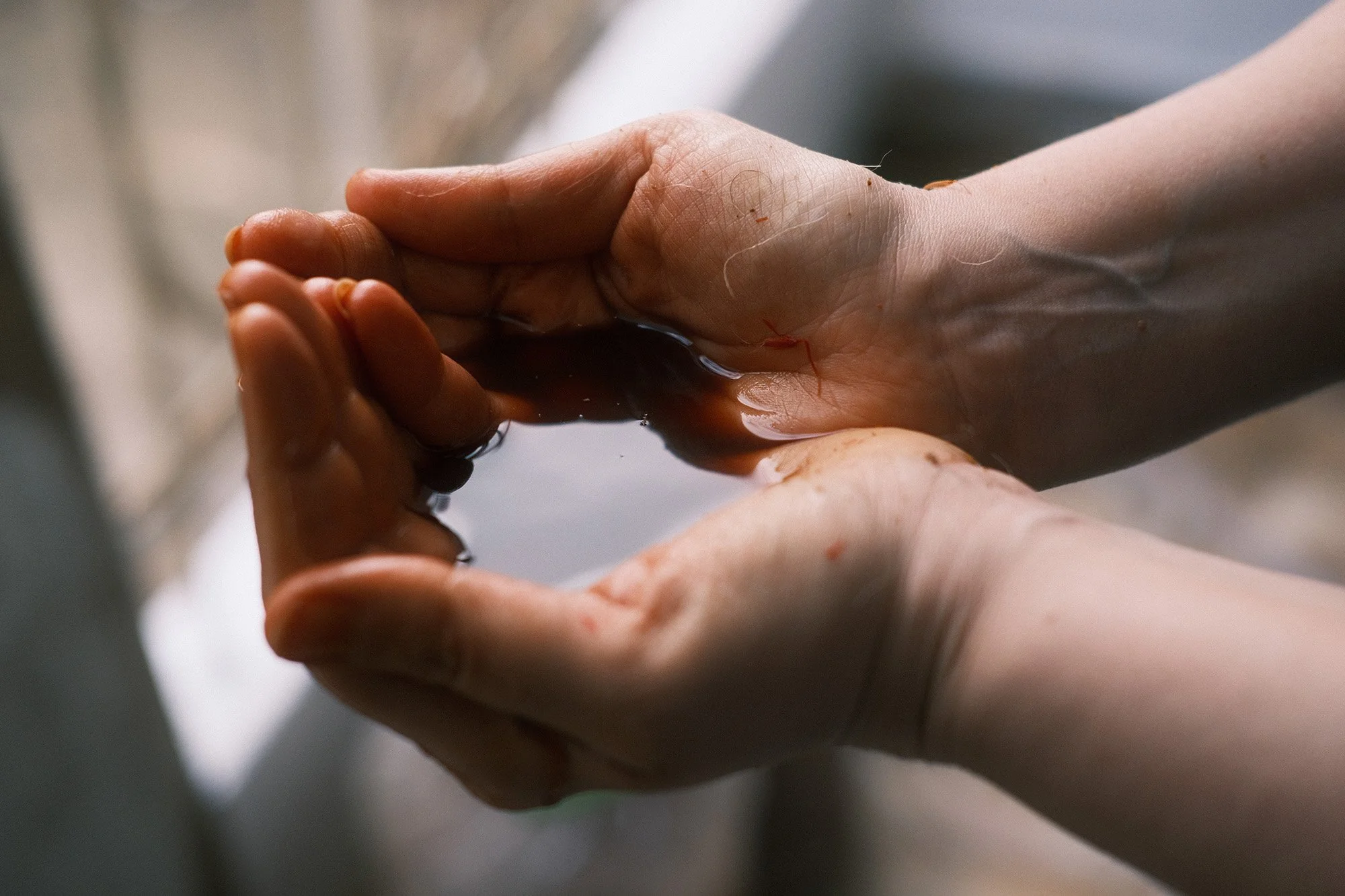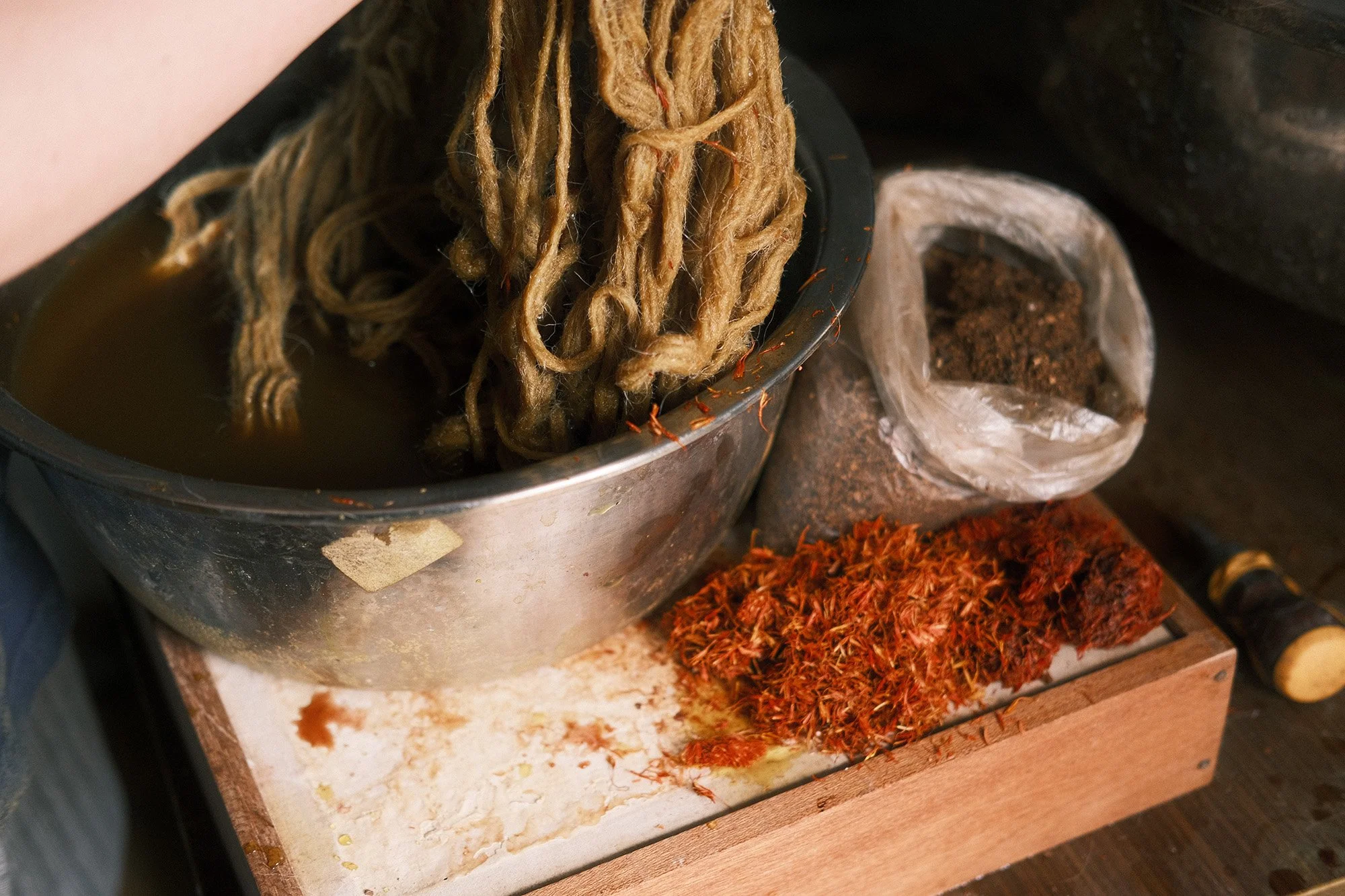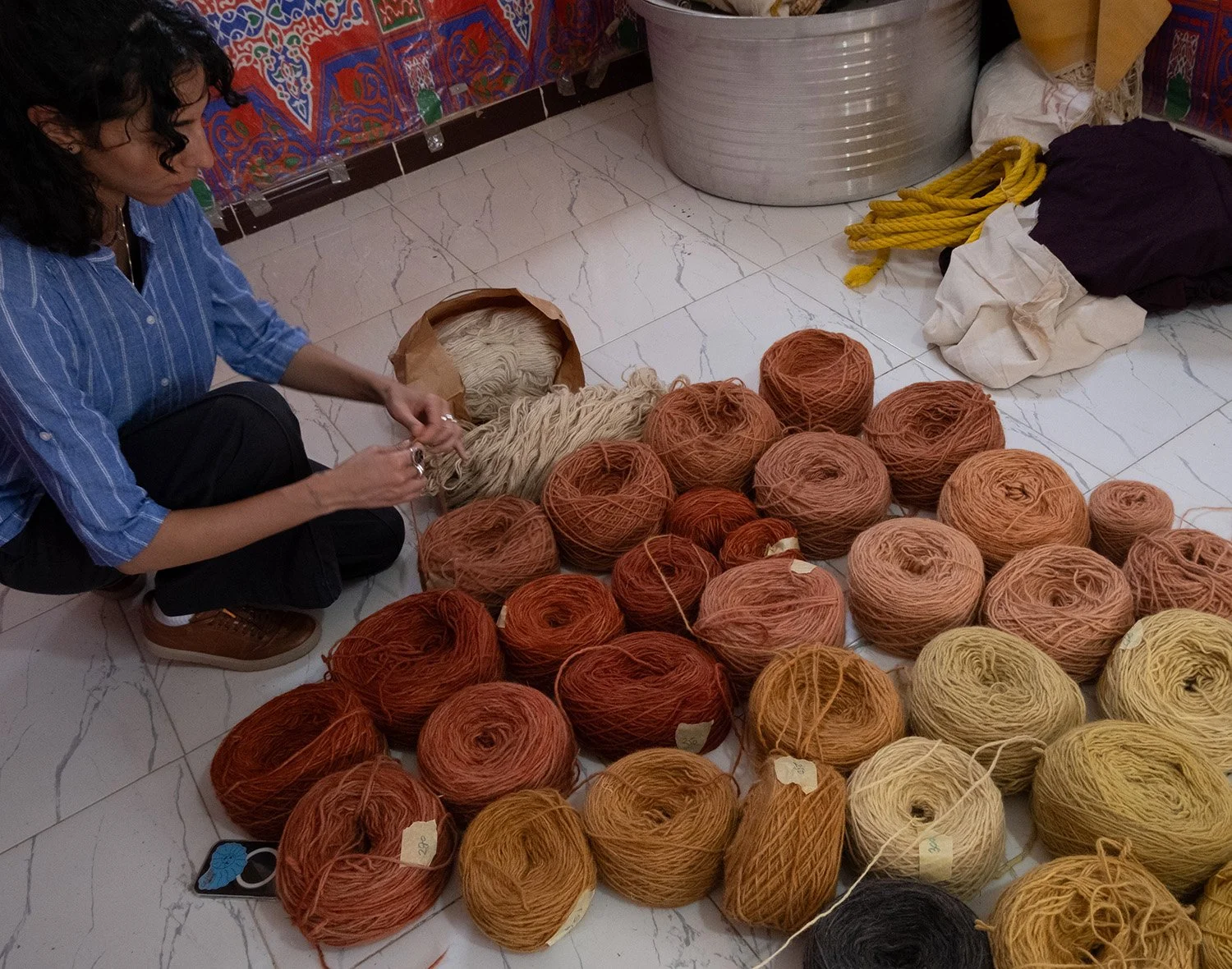BA PROCESS, Dipping into Natural Dyes
Alexandria, Egypt
Madder dyed wool runs down the middle of THREE SUNS tapestry
Early on in the Ba journey, I was inspired by a visit to Oaxaca's Zapotec weavers and their use of natural dyes to weave their rugs. Since then, I have been on a quest to source a local Egyptian colourist for handmade rugs. Despite being prominent in Ancient Egypt, it proved to be a challenge to find naturally sourced pigments today. Chemical dyes have replaced the practice due to cost and time.
Dyeing process by Studio Earthtop, photography by Mariam Salah
Moushira, founder of Studio Earthtop has a small operation in Alexandria and works exclusively with natural pigments. Using henna and madder for the red tones, pomegranate skins, safflower to achieve yellow. The final palette was determined by a commitment to pigments from locally sourced plants.
I also learnt that not all colours can be dyed using local ingredients. Indigo, known as 'Nila' in Egyptian (coming from the Nile) was prevalent in Ancient Egypt, however it is unavailable in modern times. ‘It used to grow organically, sadly, when the High Dam changed the water's behaviour, it stopped' Moushira tells me.
Freshly dyed threads, ready for the loom
The journey has been a personal challenge, practicing patience. Several factors can delay the process; colours not appearing as planned, accidents and weather (it was a particularly rainy season in Alexandria). It's a slow process, just like weaving, and a lesson to embrace the pace of the handmade.












